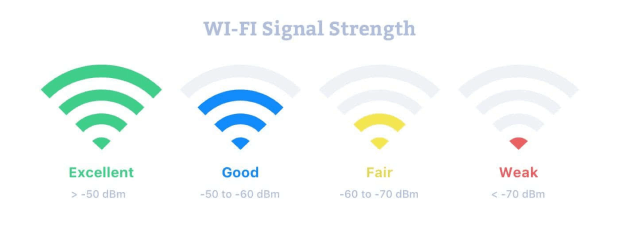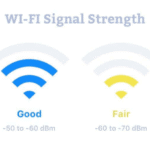
In a large win for the authorities, the Supreme Court of India nowadays upheld the constitutional validity of Aadhaar. However, the apex court docket also imposed several curbs on practices that had raised fears of data theft and violation of privacy. Among many measures introduced, the SC made it obligatory for PAN (Permanent Account Number) to be linked to Aadhaar for filing income tax return (ITR).
ITR is a form that incorporates incomes from assets and taxes thereon to the IT branch. Every citizen is obligated to file ITR earlier than the IT department. Various paperwork relies upon the category of profits, like ITR 1, ITR 2, ITR 3, ITR 4, ITR 5, ITR 6, and ITR 7. This paperwork had to be filed earlier than a particular date decided by the IT department.
Earlier, taxpayers handiest needed to provide PAN details for submitting ITR, but now, with the SC’s verdict, Aadhaar has emerged as mandatory information. The 12-digit biometric is an important part of KYC (Know Your Client) requirements.
According to phase 139AA of the Income Tax Act, every citizen eligible to receive Aadhaar can quote either the Aadhaar Number or the Enrollment ID even as filing ITR or applying for PAN.
A major cause for making Aadhaar obligatory is to authenticate tax submissions and enhance tax collections.
With an Aadhaar card, a taxpayer can also confirm their returns online with the assistance of an Electronic Verification Code (EVC). In this manner, a taxpayer will no longer need to look forward to a 1-page verification report, i.e., the ITR-V, to the Income Tax Department in Bangalore.
According to the ClearTax document, the digital Verification Code (EVC) is a 10-digit alphanumeric code sent to the tax filer’s registered cell number while filing their returns online. It allows verifying the identity of the tax filers. Such tax filers encompass people in addition to the Hindu Undivided Family (HUF).
If you’re making plans to affirm your returns through the Aadhaar card, then ensure your PAN is linked with the biometric. Once you are linked with PAN, you will be eligible to reverify your ITR.
Reporting Clergy Income on Tax Returns
Members of the clergy are in many ways treated like different taxpayers. However, there are unique tax treatments that apply to their role as employees of a church. For tax functions, contributors of the clergy may be treated as either employees or independent contractors.
Generally, you are an employee if the church or organization has the prison proper to govern both what you do and how you do it, even if you have enormous discretion and freedom of action.
If you are hired by a congregation for a salary, you’re usually a common-law worker, and earnings from the work of your ministry are considered wages for income tax purposes. However, amounts received directly from contributors of the congregation, including expenses for performing marriages, baptisms, or other private services, are considered self-employment earnings.
In either case, with approval from the IRS, clergy individuals have an opportunity to opt out of the Social Security system and not pay this tax. To request an exemption from self-employment tax, you should report Form 4361, Application for Exemption From Self-Employment Tax for Use with the aid of Ministers, Members of Religious Orders, and Christian Science Practitioners, to the IRS. This exemption stops the requirement to pay self-employment tax. However, it’ll additionally save you your receiving benefits in the course of the length of the exemption.
If you are handled as a worker:
You will acquire a Form W-2 announcement of income from your organization (church) agency.
Your agency must now not withhold Social Security tax because a minister is usually considered self-employed with regard to Social Security.
Your federal profits tax withholding is voluntary, but you must make quarterly estimated tax payments if income tax is not withheld.
Your housing allowance is typically exempt from earnings tax so long as it’s spent on housing-associated expenses.
If you are dealt with as an independent contractor:
You will acquire a Form 1099 MISC from the organizations receiving your offerings.
You need to report a self-employed tax return using Schedule C or C-EZ.
There will be no withholdings for Social Security and federal income tax.
Any housing allowance acquired isn’t always protected in earnings.
Even though you are taken into consideration a self-hired man or woman in providing your ministerial services for Social Security tax and Medicare tax purposes, you will be taken into consideration an employee for earnings tax or retirement plan purposes. For-profit tax or retirement plan functions, some of your earnings can be considered self-employment earnings, and other income can be considered wages.
If you are a minister offering ministerial offerings, you should consist of income offerings and charges acquired for marriages, baptisms, funerals, etc., further to profits. If the presentations are made to a secular organization, however, it isn’t taxable.
Since members of the clergy are taken into consideration self-hired for the functions of Social Security and Medicare taxes, the church does not withhold Social Security and Medicare taxes from a pastor’s salary the way it does for lay personnel. Likewise, the church no longer needs to pay the corporation’s proportion of Social Security and Medicare taxes for the pastor as it does for lay employees. Clergy is not a challenge to mandatory federal tax withholding. Still, the pastor may additionally select to voluntarily have the church withhold those taxes instead of submitting quarterly private anticipated taxes. Pastors are required to document Schedule SE with their Form 1040. This form is used to calculate the pastor’s self-employment taxes for Social Security and Medicare.












